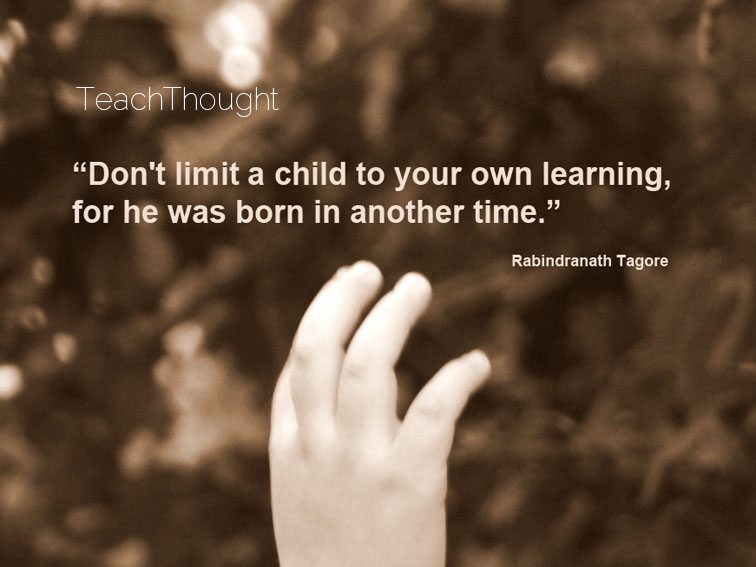How The World Is Changing And Why Education Has To Keep Pace
by Terry Heick
We can’t teach as fast as things change.
By things I mean information. Perspectives. Ideologies. What’s socially acceptable and what’s not. Our collective cultural biases and intellectual prejudices.
Educultural views on race, gender, homosexuality, edtech, equity, homeschooling, bullying, accountability, and academic standards.
Edtech views of privacy, big data, cybersecurity, YouTube, social media, texting, smartphones, and the cloud.
How students see ‘school.’
How the world sees itself.
Sentences fragments become sentences, tweets become paragraphs, and headlines become content. The expiration date for information has moved from months to minutes. Among other things, this affects how we think of information itself. It becomes an inconspicuous note in a symphony; the symphony is the performance while the notes disappear.
Exceptional thinking is less arresting than it’s been in the past because thinking, in a digital and social age, is designed and packaged from the ground-up to be alarming or it doesn’t stand a chance.
Among other effects, this can reduce our dwell-time with ideas. There is less of a tendency to sit and wrestle with an idea when that idea is characterized less by its truth than its change—or the change it represents.
And note–there is zero chance that the age of information hasn’t been a catalyst for this. Consider for a moment that this is an age of information–and that’s not as flattering as it sounds. Information isn’t wisdom. There is so much access to so many people and so many networks sharing so much data that we necessarily adjust everything else to fit the urgency of it all.
What devices we use to access what kinds of data and what times of the day.
What we save and why.
What we share and why.
What causes real change in our behavior, and what we smile at and move on. What we dismiss, and how easily we learn to do so.
Think of how this impacts teaching and learning. It discredits knowing, for one—which inherently undermines systems based on knowing.
Even how we, as teachers, package content is silently judged by students compared to the information they see on a daily basis.
Education trends are a microcosm of the shifting, fluid, and murky mess it all is. These trends–coding, Maker Movements, flipped classrooms, digital literacy, digital citizenship, digital footprints—amalgamate themselves into a digital fluid that only reveals itself in brief snapshots.
When networks represent knowledge and connectivity is a kind of intellectual potential, the ripples move outwards at the speed of sound, distorting everything.
We can’t teach as fast as things change. This implies, among other things, that we perhaps we should teach less so that we–and they–might know more.


